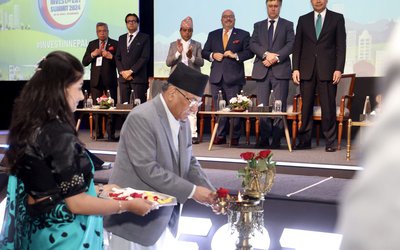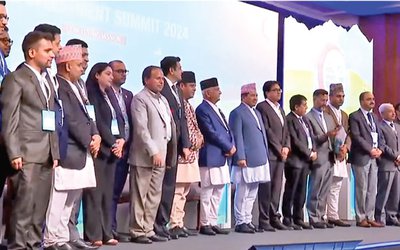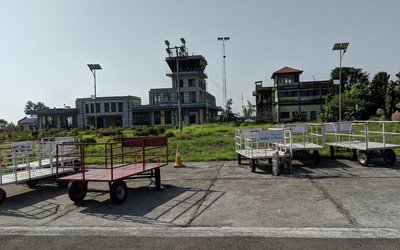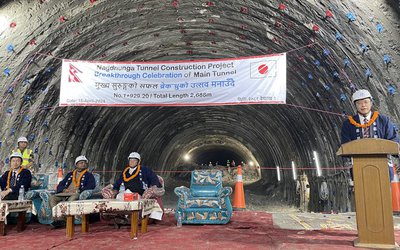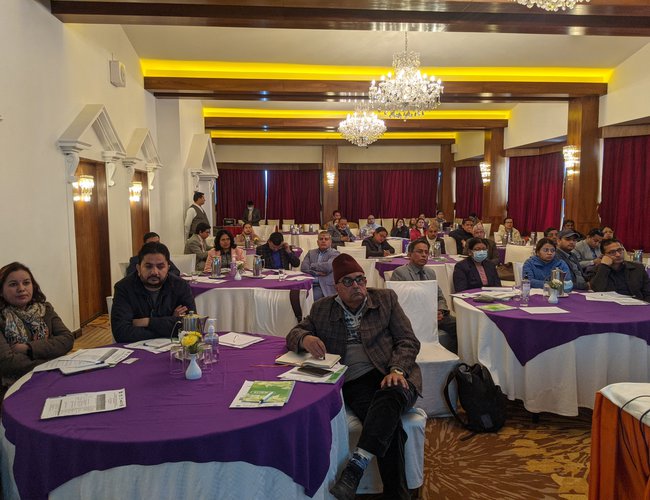
By including water in the COP27 declaration, the global climate community hasrecognized, after nearly three decades,that the climate change problem is a water problem, which is a crisis that was created by the energy sector with its impact on society felt through the water sector. And that impact is much wider than just that of too much water (floods) or too little (droughts). Given water’s ubiquitous role in ALL life process, human and non-human, any deviation from the expected normal is bound to produce cascading impacts in areas many times removed from the original point of perturbation.
A pertinent example comes from microbiology and the health sector: higher temperatures and changes in precipitation regimes mean that microbes and viruses that affect plants and animals – such as malaria, dengue and plant diseases – are now found in areas that historically never had them. Even water engineering takes a hit: because climate change is saying that the future will not be like the past, hydro-technical design framed around massaging past (limited and often unreliable) data to make future 500- or 1000-year flood and drought probability projections is philosophically untenable, especially for mega projects.
One way of conceptualizing the climate problem is to think of the atmosphere as a glass kettle on a stove: if it is simmering, the warm water rises up and cold water sinks in a gentle circulation. That is what the atmosphere was like before climate change. Now, with so much heat energy trapped within it, it bubbles ebulliently even throwing the lid off, with moisture-carrying winds swinging wildly away from normal paths as happened with last summer’s monsoon downpour in areas of otherwise semi-arid Pakistan. And it is not only warm moisture-laden air that swings to areas that normally don’t experience them, and conversely depriving areas that normally received them from much needed precipitation: very cold polar vortexes are also swinging much more towards semi-tropical places like Florida to balance the over-heated southern hemisphere. These anomalies are slated to become the new normal.
UN’s flagship World Water Assessment Program which brings together all the myriad UN agencies and collaborative partners to annually assess water-related themes devoted its 2020 World Water Assessment Report to climate change. Whereas previously water issues were seen in climate terms as only matters of adaptation, of coping with increased floods and droughts, this study argues that water management is critical for climate mitigation as well. Significant greenhouse gas reduction is possible through proper wastewater recycling and nutrient/resource recovery, through conservation agriculture suited to ecologically appropriate crops, and opting for nature-based solutions such as wetlands protection especially via transboundary cooperation by pooling resources for larger impact including using climate funding more judiciously. In the face of climate crisis, proper husbanding of water resources, especially through storage, is key to facing this unfolding disaster.
Recently International Water Management Institute (IWMI) took this idea of improved water security in view of climate and other challenges in the days further ahead by reviving the idea of pluralism in water storage that it had championed almost a decade and a half ago.Instead of seeing water storage only in terms of built infrastructure especially large dams, it argued for policy attention towards groundwater aquifers, preservation of soil moisture, natural wetlands, snowpacks as well as traditional small-scale ponds and tanks. Not only are these different storage types context and ecology specific, they are also championed by very different social carriers. Large dams are the prerogative of hydrocrats in government agencies, whereas protection and preservation of common pool resources such as groundwater and wetlands (as well as household and village-level rainwater harvesting structures) are the concerns of activists in civic movements. Lacking a common policy platform for constructive engagement where all disparate voices are heard and responded to, there is little chance such a plural approach will succeed.
In understanding the pluralism of water, it is helpful to see the global water cycle in terms of its different colours. The first, and often much ignored by policy makes is White Water, the water that is in clouds, atmospheric moisture and in what are called “sky rivers” that transport enormous amounts of water across the oceans and continents. It is the primary source of all the waters we use or are concerned with. Green Wateris water in soil moisture from precipitation of White Water, and it sustains all our forests, grasslands, terrestrial wildlife and dryland rainfed agriculture.
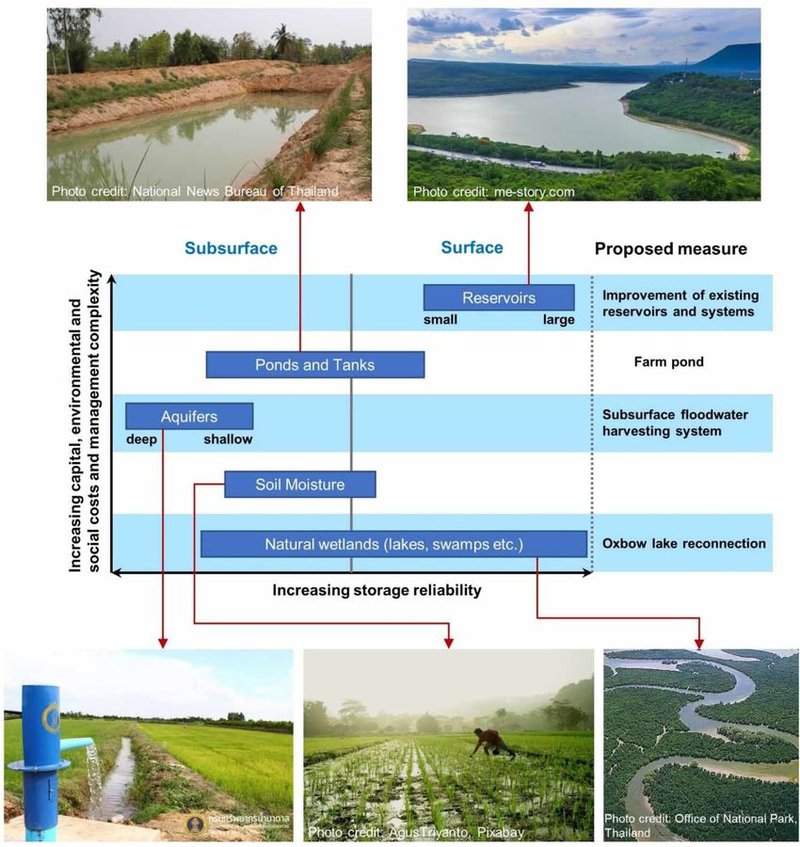
IWMI's Continuum of Water Storage Options
Blue Water, which is the surface water in streams, springs, rivers and lakes as well as snow and ice melt, is the water that has hegemonized much of public policy discourse and funding. Because it is available in easy, concentrated form, it is the water that sees allocation conflicts between countries and sectors such as irrigated agriculture, industries, tourism, domestic use etc.Then there is Brown Water (pumped groundwater which is the largest volume of stored freshwater worldwide) on which depend much of irrigated agriculture, water supply for domestic household uses as well as processing industries (including shale oil and gas that has revived US as an oil-producing superpower). It is the subject of 2022 WWDR which makes the case for its better policy visibility as a common pool resource of which governments must see themselves as custodians.
Then there are two other colours of water that are wrongly called wastewater (as the 2017 WWDR argues) that are a major source of environmental pollution if untreated but a major reusable byproducts of both water, nutrients and resources if recovered by treatment. They are Grey Water, which is water from household use that is mostly organic and easily recyclable; and Black Water which is industrial wastewater that needs serious recycling but, as research in Bangalore’s ATREE has shown, can be locked with minimal treatment into cement in road paving and other constructions without being dumped into rivers and lakes, thus polluting available freshwater.
Thus, it becomes apparent that water security through water storage has to be seen very differently from just storage behind cement and other dams. Water resources management and development have to be broadened to re-examine the planning and policy processes through new concepts of virtual water, water footprints and the nexus approach. Much of the climate debate of mitigation of greenhouse gas emissions will have to be re-thought from the perspectives of consumption: yes, Chinese and Indian annual emissions are today among the highest in the world; but they pale into much lesser levels globally if seen in per capita terms, either of today’s annual or cumulative emissions since the 1850s. They pale further if they are calculated against per capita consumption of goods and services produced by those emissions, since they are emitted to produce goods that are consumed mostly by the Global North. Thus, water and energy footprints of our onsumption lifestyles, and the debate whether they are modest or profligate, will dominate the environmental battles – and legislation – in the years ahead.
The Swedish water guru Malin Falkenmark has argued that, given the high embedded water footprint of our industrial goods, no country can industrialize that has not got adequate freshwater resources. Nepal and much of South Asia are semi-arid zones that suffer four months of monsoon floods and eight months of practically drought-like conditions with little precipitation and total reliance on groundwater, whether pumped or emerging from springs. Water scarcity in Nepal is a reality that is unfortunately much ignored and in a policy blind spot. It requires rethinking water storage away from conventional engineering that will be very different for dissimilar geographic and ecological zones, as well as social contexts that prevail in a diverse country like Nepal.

Dipak Gyawali
Gyawali is Pragya (Academician) of the Nepal Academy of Science and Technology (NAST) and former minister of water resources.
- Maldevelopment And Technology: Ethos Harbingering Coming Apocalypse
- Apr 03, 2024
- World Social Forum: Rethinking and Redefining Development Itself
- Feb 21, 2024
- Remembering An Inspiring Karma Yogi
- Jan 09, 2024
- New World Disorder And The Case For Ideology
- Dec 13, 2023
- Loktantra’s Moral Turpitude
- Nov 06, 2023

